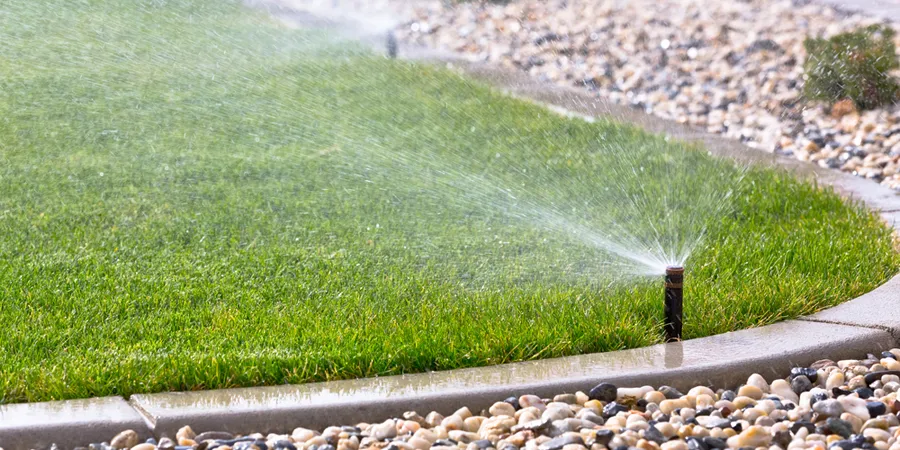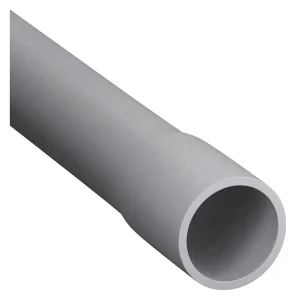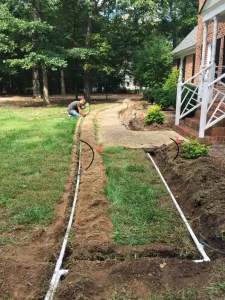3 Factors to Building a Durable Long Lasting Irrigation System

An irrigation system in your lawn and garden is a great way to maximize the vitality of your landscapes while keeping costs down. Water delivery is optimized, ensuring less waste, and can be set for the middle of the night when there is little to no loss to evaporation. However, an improperly installed irrigation system, like other landscapes, will cause expensive problems not far down the road. Here are three important things to keep in mind when installing an irrigation system that will last.
Properly Rated Pipes

Irrigation systems in Victoria BC are installed using PVC tubes. You may have seem them in your local Home Depot. They are typically in 10 or 20 ft sections and come in 0.5”, 0.75”, and 1” diameters for residential uses. (Commercial can be much thicker). In addition to the varying diameters, however, they also have varying thickness. PVC pipes are rated according to their thickness, which affects their strength, durability, and ability to handle various pressures. A thicker PVC pipe of the same diameter can cost 4 to 5 times that of a thinner lower rated one. As a result, there’s a great incentive for contractors to cut corners and save money on materials by getting the cheap stuff.
However, this can lead to problems including failures and damages in the entire irrigation system.
In any irrigation system, there is a main line coming from your water main. Think of this as a highway. This line handles the most pressure and the most flow and if anything happens to it, your entire system shuts down. Then there are branches coming from each control valve to each zone you have. These branches handle less water than the main. These are like main streets. If one of these branches fail, the entire zone will fail, but other zones will be unaffected. Finally, there are sub-branches that go from the main branch to the heads. These handle the least amount of water and the least critical in an irrigation system. These are like your neighborhood roads. It is important then, to use high grade thick pvc on the main lines. Additionally, knowing where flow and pressure are the greatest mean avoiding corners and turns as this puts tremendous pressure on the turns causing them more likely to fail, but also the turbulence can cause interruptions in the flow. Furthermore, the more critical arteries and branches should use larger diameter pipe rather than the cheaper 0.5” ones. In fact it’s almost always best to avoid using 0.5” pipes as they restrict flow, meaning a less efficient system with more zones than necessary and are the least durable.
Adequately Buried

An irrigation system should ideally by buried around 1 ft deep. At this depth, they are less susceptible to freezing temperatures, which can cause damage. Furthermore, any other landscaping work is usually done 8” or less deep, meaning your irrigation system would not be damaged. While occasionally due to the rocky terrain of Victoria, it’s not possible to get to this depth, most of the time when it’s buried too shallow is from people being lazy when trenching. Burying it around 1 ft deep means more work at the beginning, but in the long run, will save you hundreds to thousands in repairing costs.
Avoiding Big Box Stores
Something that is not commonly known is that while big box stores like Home Depot and Lowe’s sell similar looking irrigation supplies, some of those supplies, even if they are the same model from the same manufacturer are actually a specific “residential homeowner” line made for big box stores. What this means is that they are more cheaply made using inferior and less materials than commercial products found in specialty stores. This is to satisfy the price point requirements of big box stores but as a result you are receiving a similar looking but inferior product. While something items like PVC pipes are standardized due to a rating system, items like control valves are not. Therefore, it’s worth spending a few extra dollars and getting commercially rated equipment as much as possible as the cost to repair and reinstall parts are a magnitude higher than any potential cost savings in material early on.
Conclusion
When installing an irrigation system, it’s important to avoid being penny wise and pound foolish. That is because any small savings from the risk taken in subpar materials and install techniques can multiple a magnitude higher down the line in repair and reinstallation costs. It’s best then to follow best practice and do it right the first time as much as possible to avoid heft repair bills.